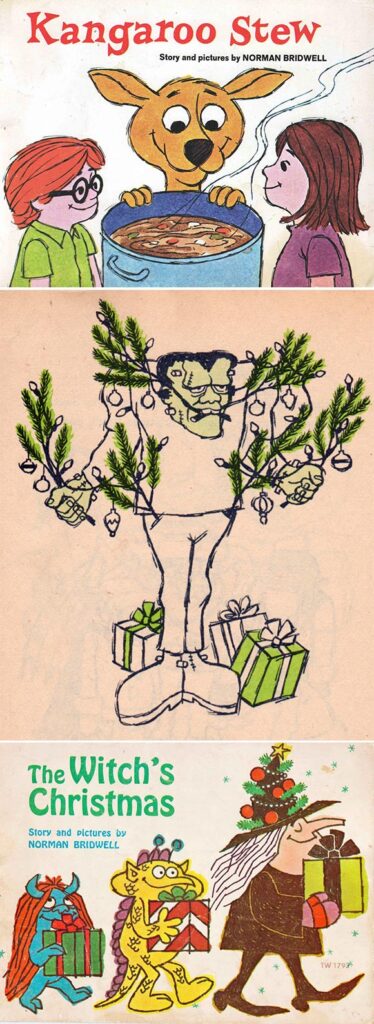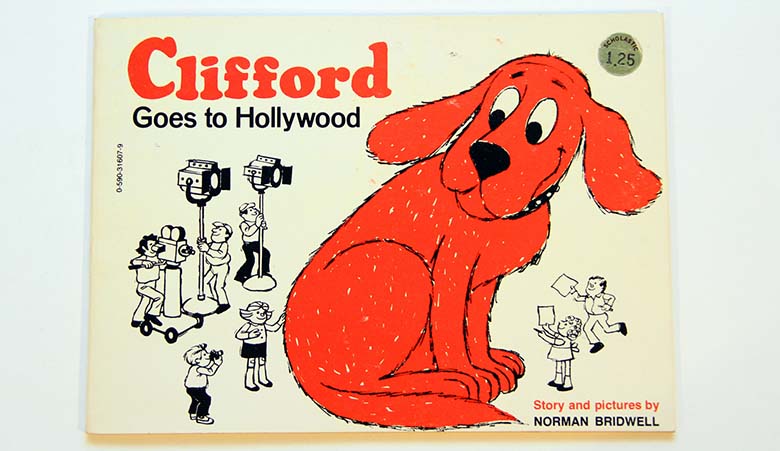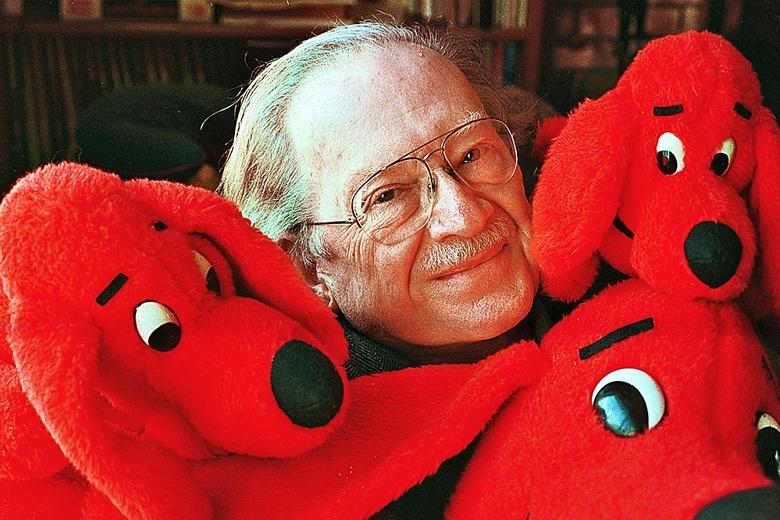Deep dive into Children’s Author Norman Bridwell and Clifford the Big Red Dog
In the world of children’s literature, author Norman Bridwell’s name stands out as the mastermind behind one of the most beloved characters ever created: Clifford, the Big Red Dog. The name ‘Clifford’ is almost synonymous with childhood for millions around the world, and behind this big red canine is the genius of Bridwell. Bridwell’s journey from humble beginnings to global recognition as a prolific children’s author is nothing short of inspiring. Here’s a deeper dive into the life, creations, and legacy of author Norman Bridwell.
Early Life and Aspirations of Author Norman Bridwell
Born on February 15, 1928, in Kokomo, Indiana, Norman Ray Bridwell’s early years were painted with the simplicity of life in America’s heartland. Growing up in Kokomo, he was exposed to a tight-knit community spirit, which would later influence his stories’ themes of camaraderie, love, and adventure.
His childhood was not without its challenges. Early on, Norman showed a keen interest in drawing but in a number of interviews he recalled struggled in school. Yet, this never deterred him; if anything, it made him more resolute.
Bridwell’s Move from Kokomo to New York
Upon finishing high school, Bridwell pursued his artistic passion, first studying at the John Herron Art Institute in Indianapolis and then at Cooper Union in New York. The bustling energy of New York, a sharp contrast to his serene Kokomo roots, added depth to his storytelling. Eventually, seeking a blend of tranquility and inspiration, Bridwell and his family settled in Edgartown, Massachusetts on Martha’s Vineyard. This picturesque island, known for its artistic community and natural beauty, became Bridwell’s haven from 1969 until his passing.

Clifford’s Birth: A Twist of Fate
Before Clifford, Bridwell faced countless rejections from publishers. The breakthrough came unexpectedly. As the story goes, he was trying to create a children’s book and sketched a young girl and her horse. However, he found his rendition of the horse to be less than perfect. Transforming this ‘horse’ into a giant red dog, he created Emily Elizabeth, named after his daughter, to accompany the dog. Clifford, named after his wife’s imaginary childhood friend, was born.
The Depths of Clifford: Bridwell’s Exploration of Universal Themes
While Clifford’s defining trait is his size and colour, he’s much more than that. Through the series, Bridwell tackled various themes. From friendship, honesty, and kindness to dealing with feelings of jealousy, loneliness, and inadequacy.
Bridwell was quoted as saying, “Clifford has been very forgiving. When I make a mistake, he doesn’t mind.” This sentiment encapsulates the essence of Clifford’s character — understanding, forgiving, and always loyal. These stories showcased Clifford’s unwavering loyalty, embodying Bridwell’s belief in the good in everyone.
Beyond Clifford: Author Norman Bridwell’s Diverse Portfolio

Bridwell wrote and illustrated more than 40 Clifford books and, while Clifford remains his biggest success, author Norman Bridwell’s storytelling genius was evident in other works like The Witch Next Door and Monster Holidays. Each book resonated with Bridwell’s trademark blend of imagination and emotion.
The Witch Series
Author Norman Bridwell’s “The Witch Series” centers on a benevolent witch and her cat as they navigate the everyday world. In “The Witch Next Door” (1969), a kind-hearted witch moves to a typical neighborhood, adjusting to a life unfamiliar to her. “The Witch Goes to School” (1970) humorously portrays her attempts to integrate by attending school, resulting in magical mishaps that highlight the importance of acceptance. In “The Witch’s Vacation” (1971), she embarks on a holiday, inevitably leading to enchanting chaos.
Monster Tales
Norman Bridwell’s foray into monster tales infuses humor and warmth into traditionally fearsome creatures. “How to Care for Your Monster” (1970) is a whimsical guide on nurturing pet monsters, portraying them as endearing, quirky beings and subtly teaching about responsibility and kindness. “A Tiny Family” (1974) narrates the adventures of a diminutive family living within walls, emphasizing resilience, adaptability, and the power of family ties. In “Monster Holidays” (1973), Bridwell crafts a world where monsters celebrate holidays in their own unique, heartfelt ways, underscoring universal themes of love, festivity, and unity.
Clifford’s Global Impact and Cultural Influence
From books to animated TV series, movies, a musical, stuffed animals, key chains, posters and stickers, Clifford’s influence has been pervasive. Schools often use these stories to impart moral lessons, and parents read them at bedtime, making Clifford a household name.
Moreover, Clifford became a symbol for many social causes. Embodying themes of acceptance, understanding, and unconditional love, the big red dog was often used as an emblem for inclusivity, especially in campaigns and programs geared towards children.
His books have found their way into homes, schools, and libraries worldwide, with Clifford’s adventures selling over 126 million copies in 13 languages!

Recognising Excellence: Awards and Honours for Author Norman Bridwell
Norman Bridwell’s vast contributions to children’s literature garnered him numerous honors and acknowledgments over his illustrious career. Notably, his beloved Clifford series was distinguished with the IRA/CBC Children’s Choice Award multiple times, a testament to its resonance with young readers. His literary legacy was further celebrated in his home state, as he received the Indiana Authors Award, a significant nod to his impact on children’s literature. Demonstrating the series’ enduring popularity, Scholastic frequently featured Bridwell’s Clifford books in their list of top 100 bestselling titles. Moreover, various national and regional library associations underscored his influence by often recommending or spotlighting his books in their essential children’s reading lists.
Furthermore, several literary associations and children’s organizations have posthumously honoured him for his immense contribution to children’s literature, cementing his legacy as a titan of the genre.
Legacy Beyond the Printed Page
Beyond books, Clifford made his way into multimedia. The animated series and multiple movies, the most recent of which screened in 2021, further popularised Clifford’s adventures, reaching households that might not have had access to his books. This expansion ensured that Clifford’s values of love, friendship, and exploration reached an even broader audience and a new generation.
A Legacy Immortalised: The Continued Impact of Author Norman Bridwell
Norman Bridwell passed away on December 12, 2014, at the age of 86 due to prostate cancer. He left behind a legacy that has brought joy to millions of children around the world. His passing may have marked the end of an era, but his stories, especially those of Clifford, live on. Bridwell’s partnership with Scholastic ensured that his tales would continue to inspire generations.
The Evergreen Appeal of Bridwell’s Creations
What makes author Norman Bridwell’s creations timeless? It’s his adeptness at weaving universal themes with relatable characters. One might wonder: What makes Clifford timeless? It’s the universality of the themes Bridwell explored. Every child, at some point, grapples with issues of self-worth, friendship, and discovery. Clifford’s tales, set in the imaginative Birdwell Island, provide solace, understanding, and guidance.

A Tribute to Author Norman Bridwell
Norman Bridwell’s journey, stretching from the serene streets of Kokomo to the bustling avenues of New York, crafted a mosaic of stories that have become an integral part of global children’s literature. Each page he inked, every character he created, echoed a piece of his own experiences, hopes, and dreams. In Clifford, he left behind not just a big red dog but a beacon of love, friendship, and adventure. Author Norman Bridwell’s legacy, through Clifford, is a testament to the power of perseverance, imagination, and the universal language of stories.




